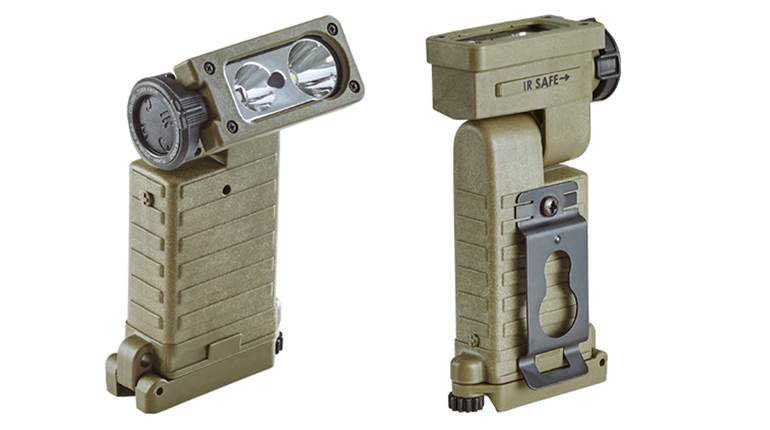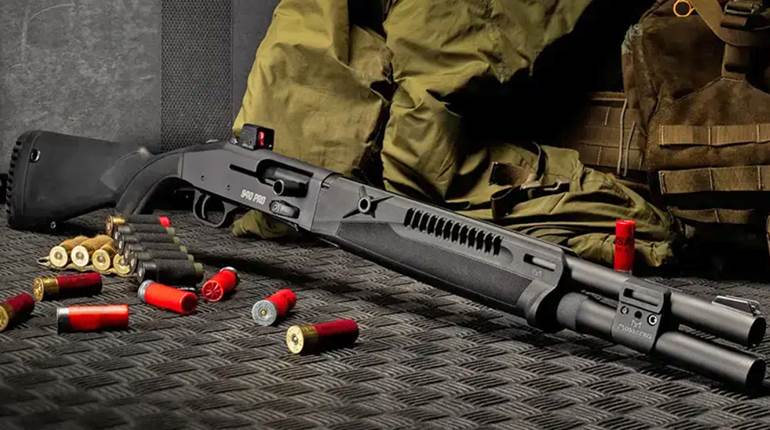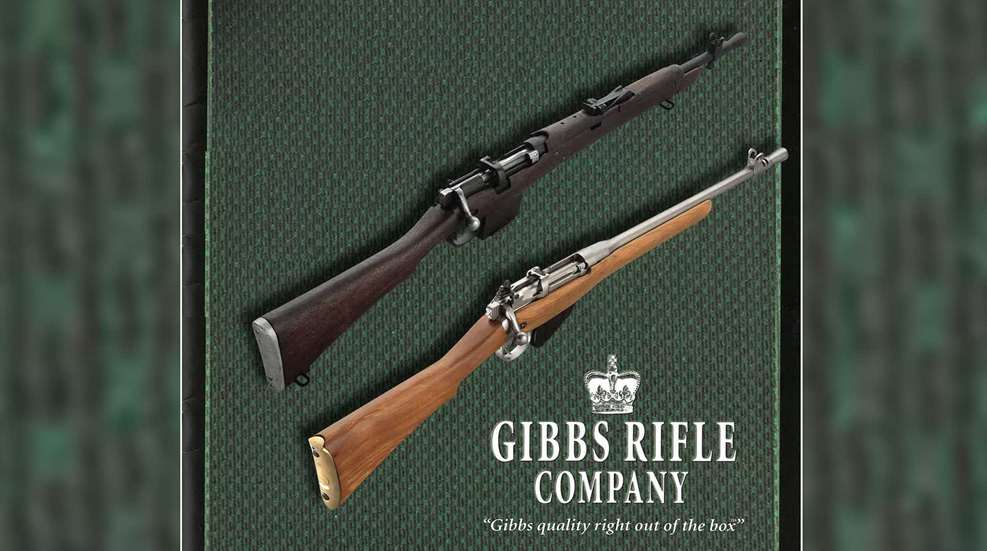
Lee-Enfield rifles are popular with collectors for many reasons, including their prolific use across the world wars and in other conflicts around the globe. One enticing aspect of the Lee-Enfield family is precisely that there are so many different variations on the basic design. This is understandable for a military action that saw a service life in the British army of more than 60 years and continues to see use today.
One potential pitfall for the burgeoning collector is a failure to distinguish between "official" versions of the Lee-Enfield, like the Short, Magazine Lee-Enfield; the No. 4 rifle; the No. 5 rifle, the so-called "jungle carbine;" the Ishapore 2A1 and others from the "unofficial" rifles created from whole cloth by U.S. importers. Several companies are known to have taken imported guns and modified them, sometimes in efforts to create pseudo-official models that mimicked British-designated designs.
An early importer crafting these unofficial guns was Santa Fe Arms out of Golden Gate, Calif., which took full-stocked military rifles, largely undesirable in the eyes of the general public in the 1950s, and crafted sporting variations and unofficial "jungle carbines" loosely patterned after the No. 5 carbine adopted by the British military starting in 1944. Another later company to develop unique variations on the Lee-Enfield theme was the Gibbs Rifle Company out of Martinsburg, W.V., which was founded in 1991 as a sister brand of Navy Arms.
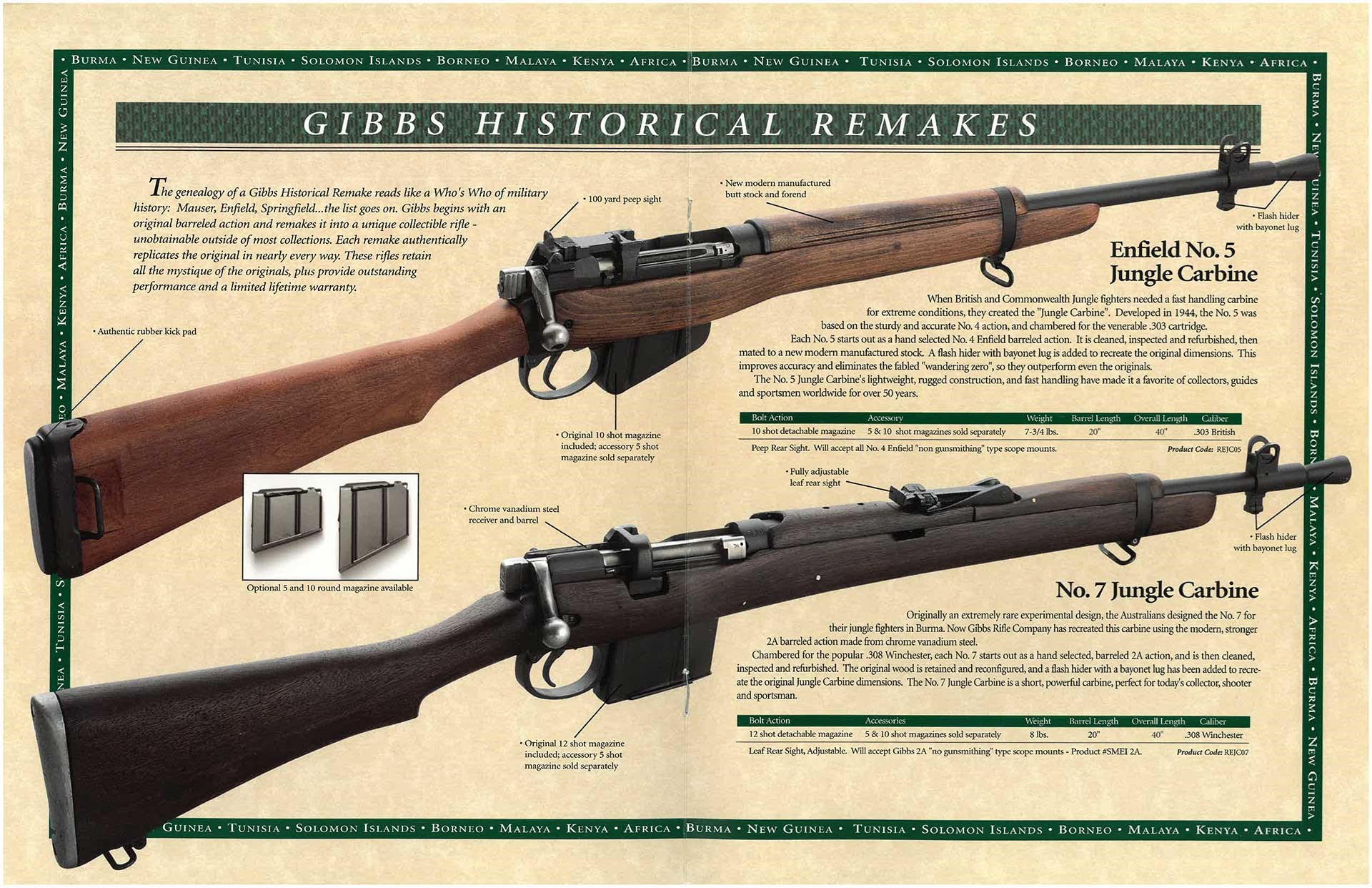
By the mid-1990s, the last stocks of Lee-Enfield surplus were winding down, and many of the rifles arriving stateside were in sub-optimal condition. In an effort to create attractive, saleable models based on the Lee-Enfield action, Gibbs re-worked many imported guns and offered them in one of several variations.
Possibly the most prolific and, to some collectors, the most confusing is the Gibbs Enfield No. 5 Jungle Carbine. As the name implies, these models were intended to replicate the size, profile and light handling of the No. 5 carbine produced by the British from 1944 to 1947. The original carbines were derivatives of the British No. 4 rifle, but in an effort to create a lighter, handier gun, a number of lightening cuts were made to the barrel and receiver body. Additionally, the barrel was shortened, and the wood stock cut down. Due to the receiver cuts, the No. 5 suffered from accuracy issues, and by 1947, the British government determined that the gun had inherent flaws that could not be overcome, and production was halted after more than 250,000 guns had been produced.
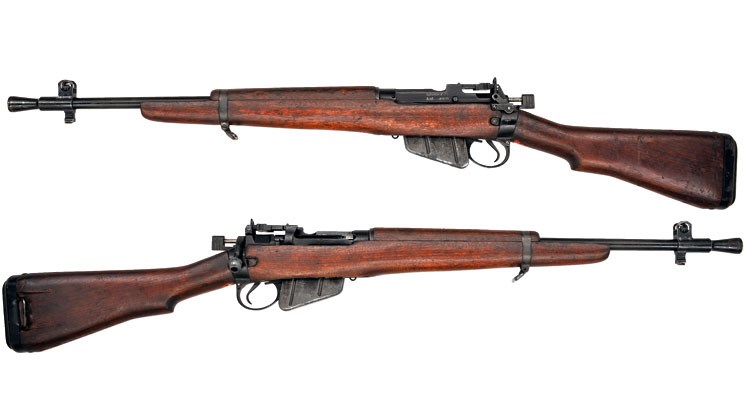 Shown above is an original No. 5 "jungle carbine." Note the open space between the receiver and the bottom of the folded-down rear sight, illustrative of a lightening cut that was not present on the No. 4 rifle and will not be seen on re-created Jungle Carbines.
Shown above is an original No. 5 "jungle carbine." Note the open space between the receiver and the bottom of the folded-down rear sight, illustrative of a lightening cut that was not present on the No. 4 rifle and will not be seen on re-created Jungle Carbines.
While original No. 5 carbines have been imported into the U.S. in great numbers, Gibbs saw an opportunity to make use of certain No. 4 rifles it had on hand and undertook efforts to re-create these guns as pseudo-No. 5 carbines. Newly made stocks and handguards were acquired, topped with a newly made rubber buttpad. A combination flash hider/bayonet lug was mounted to the newly shortened barrel. At a glance, the Gibbs No. 5 Jungle Carbine looks similar enough to the British-pattern No. 5. A closer examination will reveal telltale signs, such as the lack of lightening cuts on the receiver and barrels. Regardless, as true No. 4 rifle actions, the Gibbs guns do not suffer from the accuracy issues that plagued the original No. 5s.
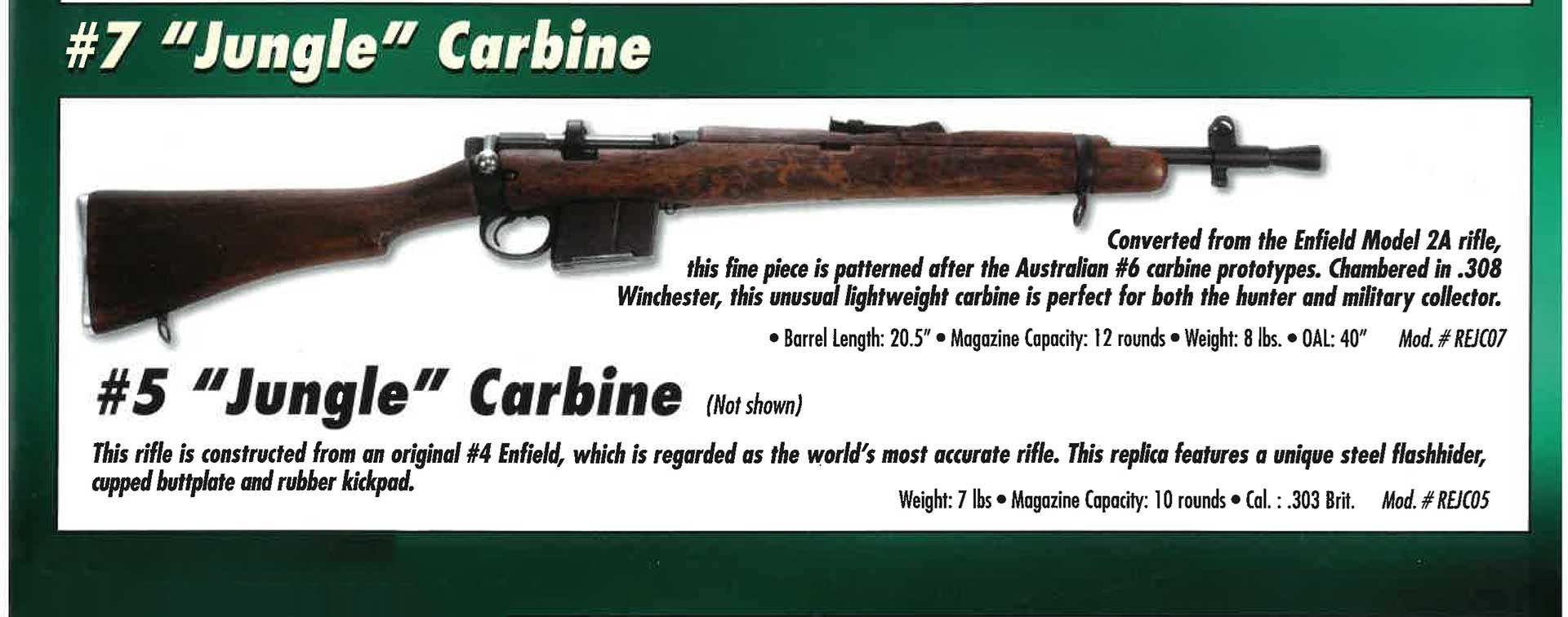
Continuing on the "jungle carbine" theme, Gibbs also produced what it termed its No. 7 Jungle Carbine. Unlike the No. 5, there was no such designation for any rifle in either the British or Australian military. Instead, Gibbs took inspiration from an experimental trials rifle produced by the Lithgow Small Arms Factory in Australia at the end of World War II. The Australian No. 6 carbine was a trials rifle built off a No. 1 action. Several versions were produced, each having different sights and buttstocks. Ultimately, only about 300 trials carbines were built before the program was scrapped following World War II's end.
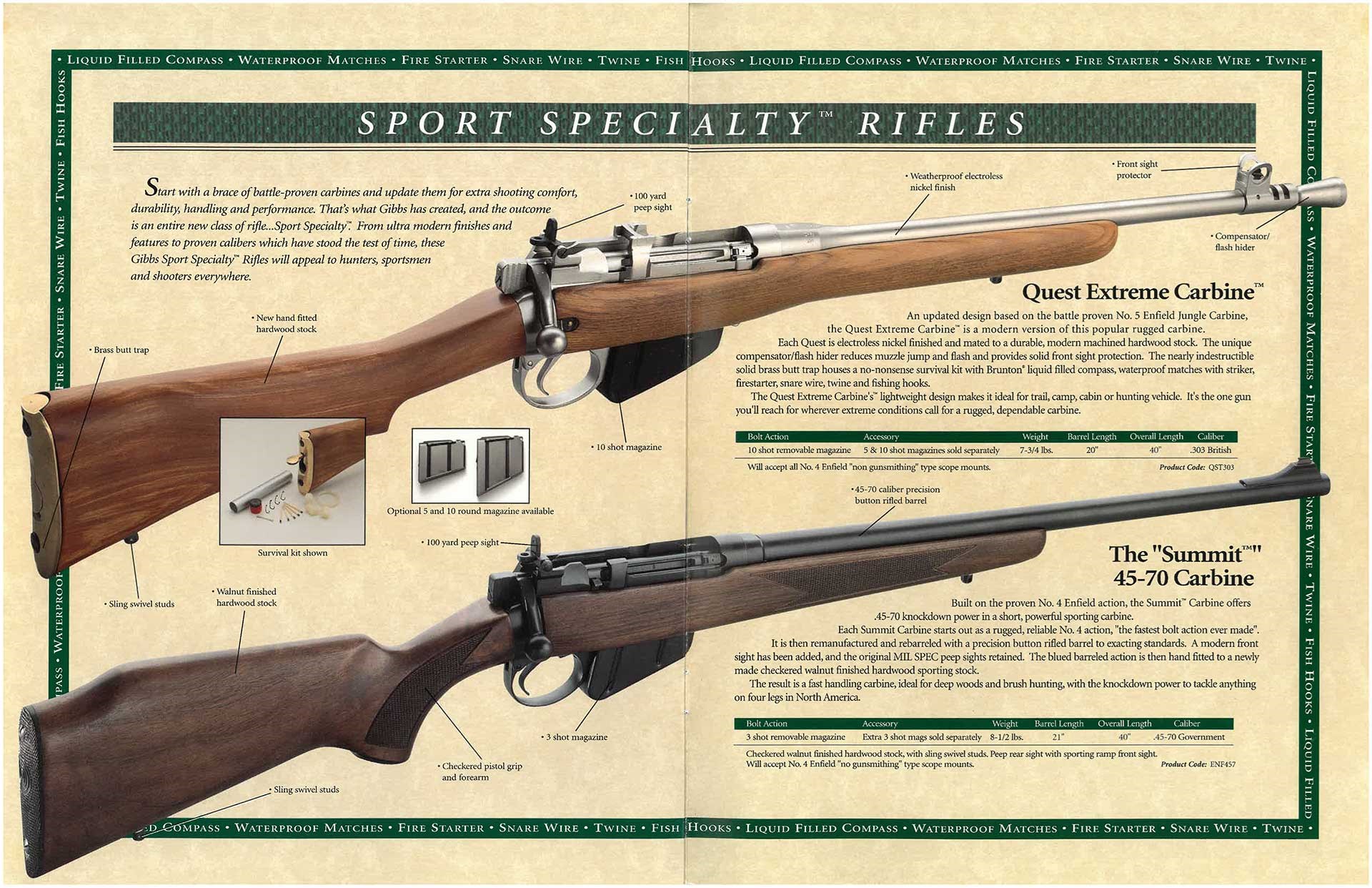
Gibbs, in its 2000 marketing catalog, claimed that the No. 7 Jungle Carbine was "originally an extremely rare experimental design" and said the company had recreated it with the "modern, stronger 2A1 barreled action made from chrome vanadium steel." Barrels were cut back to 20" and topped with a combination bayonet lug and flash hider, and the wood stocks were reshaped to replicate a look similar to that of other "jungle-carbine" guns. Of course, due to their being built on 2A1 rifles produced in India, the guns were chambered for 7.62 NATO.
In addition to its "Historical Remakes," the moniker under which Gibbs sold its jungle carbines, the company also reconfigured existing surplus rifles under its "Sport Specialty" line. The Quest Extreme Carbine was built on existing No. 4 rifle actions, with barrels cut back to 20" and topped with a combination compensator/flash hider. The entire barreled action was treated with a weather-resistant "electroless nickel" finish, and the guns included a new wood stock, 100-yard peep sight and a survival kit inside the brass butt trap. Like other models in the Gibbs lineup, it retained its original .303 British chambering, though a later version introduced in 2001, the Quest II, was built on an Ishapore 2A1 barreled action and, therefore, was chambered for 7.62 NATO.
 Shown above is an Ishapore 2A1 full-length rifle, as imported by Gibbs (top) next to a Gibbs re-created Jungle Carbine (above).
Shown above is an Ishapore 2A1 full-length rifle, as imported by Gibbs (top) next to a Gibbs re-created Jungle Carbine (above).
One of the more interesting variations offered by Gibbs was its Summit Carbine. Unlike other Enfield-based offerings, all of which retained the gun's original chambering, the Summit Carbine was an entirely re-worked firearm chambered for the .45-70 Gov't. cartridge. New-production, button-rifled barrels were mounted on No. 4 rifle receivers that had their original charger bridge milled away, and the guns were topped with a ramped front sight. The actions were then outfitted with newly made, sporter-style hardwood stocks with traditional checkering on the grip and fore-end. While the rifles used an Enfield-style magazine, capacity topped out at three rounds. A similar model, termed the Frontier .45-70, was also produced for a short while, using No. 1 rifle receivers instead of the No. 4.
By 1997, the company had ceased offering remakes based on the No. 4 rifle actions, but versions based on the Indian 2A1 rifles continued to be sold. In this line, a new model was offered, one the company called its Enfield Model 2A #1 Mk III Tanker. Based on a standard Ishapore 2A/2A1 rifle, the Tanker had its 25" barrel cut back to 20", and the fore-end and top wood were subsequently shortened to accommodate the reduced barrel length. The Tanker retained the original No. 1-style nose cap and barrel band, which enabled the gun to maintain something of a military profile while still being shorter and handier.
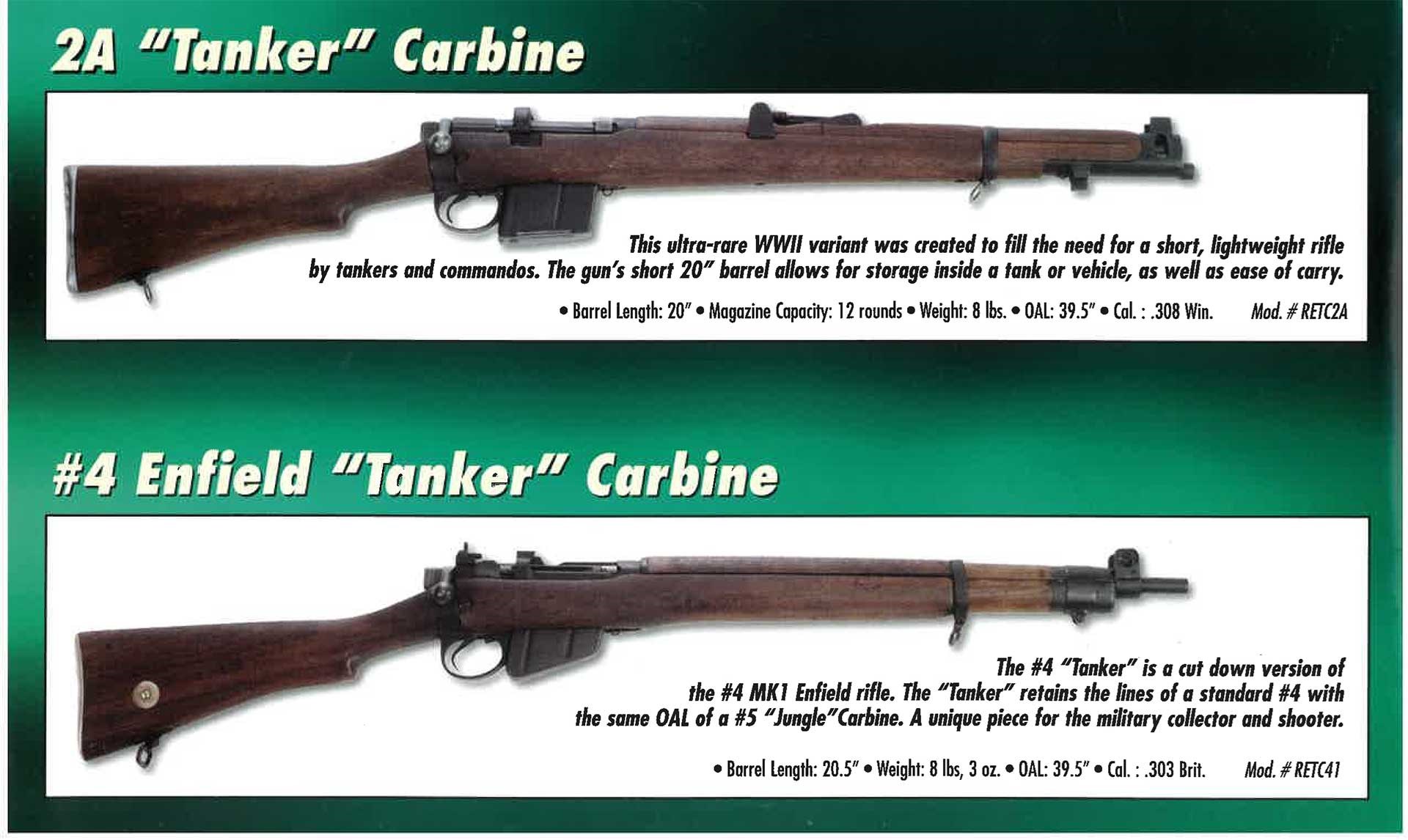 In addition to "Tanker" carbines made from 7.62 NATO-chambered Ishapore 2A1 rifles, Gibbs also offered an unknown number of cut-down No. 4 rifles made into "Tanker" variants.
In addition to "Tanker" carbines made from 7.62 NATO-chambered Ishapore 2A1 rifles, Gibbs also offered an unknown number of cut-down No. 4 rifles made into "Tanker" variants.
Though Gibbs never made reference to it in its catalogs, the Tanker model was certainly inspired by yet another experimental Australian design, which never received an official designation. The Experimental No. 1 Shortened & Lightened Rifle, as referenced in Ian Skennerton's The Lee-Enfield Story, had its barrel cut back to 20.2", with the full stock subsequently reworked to maintain the snub-nose profile of the standard No. 1 while also maintaining its compatibility with the Pattern 1907 sword bayonet. Only about 100 of these guns were produced, each with its serial number prefix being "XP."
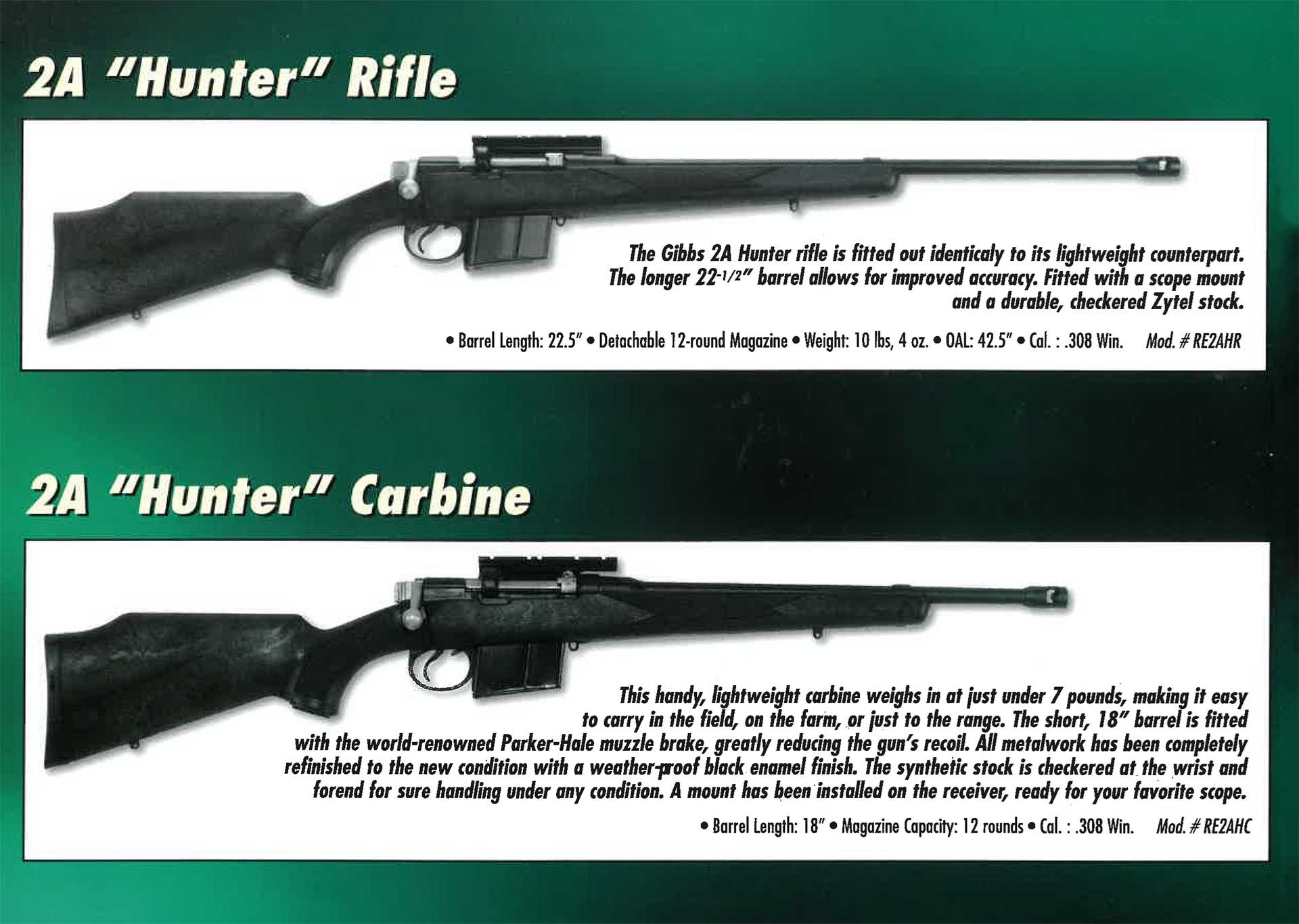 Additional synthetic-stocked "Hunter" variants of the 7.62 NATO-chambered Ishapore 2A1 were also offered through Gibbs.
Additional synthetic-stocked "Hunter" variants of the 7.62 NATO-chambered Ishapore 2A1 were also offered through Gibbs.
Today, many collectors decry the "butchery" associated with the re-working of military surplus rifles of yesteryear. In past decades, though, many of these guns were considered undesirable as a collector's item and sold for a pittance. True, too, is the fact that many of the guns imported by Gibbs Rifle Company, Santa Fe and others were simply unsellable in their original form. From cracked stocks to bent barrels to missing parts, many imported "collector" guns that formed the basis of these re-worked arms would still be largely undesirable today, had they been left untouched.
Instead, enterprising firearm pioneers sought to make lemonade from their lemons and, in so doing, created a unique and rich subset of guns that are still desirable to many today, despite being unofficial derivatives of the Lee-Enfield action. Most are still attainable at affordable prices and offer enthusiasts a unique shooting experience that can be had without wearing out a collectable original. For those who aren't aware of the differences between the official and unofficial Enfields, the rule in the collecting world was, is and will continue to be: caveat emptor.



























